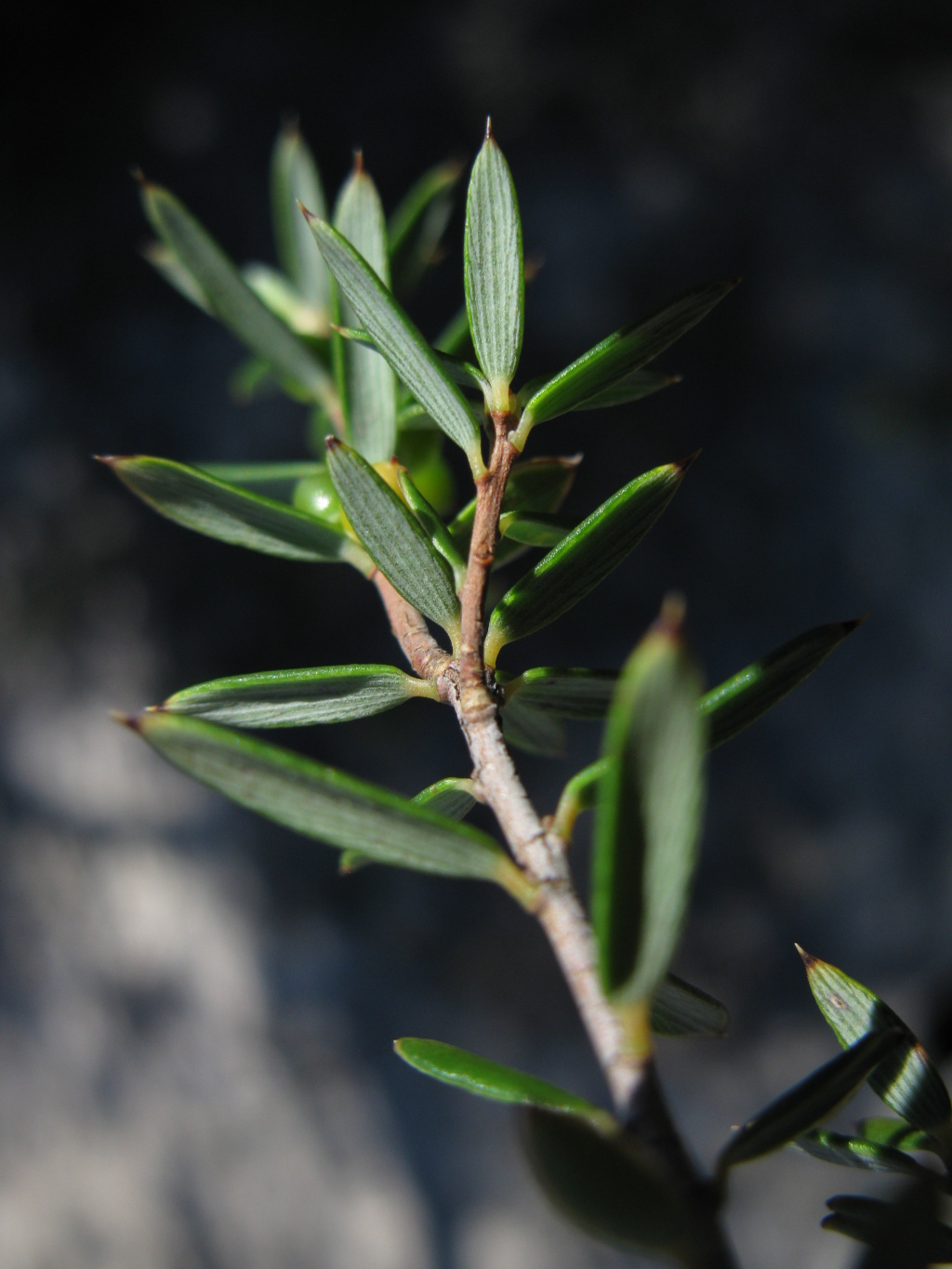Monotoca
Shrubs or small trees. Leaves petiolate or sessile, often discolorous, lower surface with few to many usually branching subparallel-palmate veins. Flowers bisexual or unisexual, axillary or subterminal, solitary, or in spikes or rarely racemes, occurring on current or previous (rarely older) season's wood; each flower subtended by a caducous or persistent (sometimes leaf-like) bract and 2 bracteoles that immediately subtend the sepals; corolla (4–)5-partite, campanulate or rotate; tube glabrous internally; lobes triangular, valvate (or rarely imbricate apically) in bud, erect or with recurved tips, glabrous to papillose (rarely with a few short hairs inside); anthers usually oblong, enclosed in or exserted from corolla tube; filaments slender, adnate to corolla tube; nectary annular, or in distinct scales; ovary glabrous or rarely hairy, usually 1-locular (rarely to 4-locular, not in Victoria) with 1 ovule per locule, style glabrous, short, stigma lobed. Fruit a drupe, with a fleshy or dry mesocarp and a hard endocarp.
Endemic Australian genus with c. 17 species (some undescribed), occurring in all States except Northern Territory.
All Victorian species have female and functionally male flowers on separate plants (very rarely on the same plant). Female flowers have stamens reduced to antherless staminodes. Accurate measurement of floral parts is critical for determination and as shrinkage occurs when flowers dry, fresh or rehydrated material should be measured. In spicate inflorescences, peduncle length is measured from the base to the lowest bract (sterile or fertile).
Albrecht, D.E. (1996). Epacridaceae. In: Walsh, N.G.; Entwisle, T.J., Flora of Victoria Vol. 3, Dicotyledons Winteraceae to Myrtaceae, pp. 464–509. Inkata Press, Melbourne.
 Spinning
Spinning

